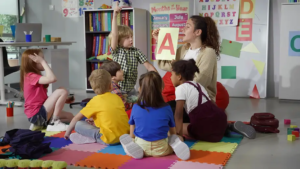Before we dive into part three of educating and enlightening those around us about foster care, pause and think for a moment whether you realize how expansive foster care really is. If we include every grandparent or relative caring for grandchildren, nieces, nephews, cousins, and even much younger siblings, the number of people involved is staggering. On a positive note, since foster care in some form is so prevalent, virtually everyone has the opportunity to take part in creating Foster Care Friendly Communities.
Part three of “how together we can educate and enlighten those within our community about the real needs of those affected by foster care” focuses on the children and youth who, by no fault of their own, find themselves in foster care.
What are the real needs of the children and youth in foster care and how can we meet those needs? In reality, the needs are many and complex. There are immediate needs that are definitely appreciated by youth in foster care. One young lady told us that when she first went into care she was placed in a group home. She had nothing at all and would have found it great to have had a “welcoming package,” as she called it, with toiletries, snacks, a blanket, and a notebook. She was 10 years old at the time. Suitcases are appreciated when a child must transition to a different placement. Foster homes that are warm and inviting with foster parents ready to soothe the traumatized and listen to the scared and hurting are critical – especially when first coming into care.
However, as time moves forward and foster care becomes the “new normal” for many children and youth* the needs change and become more complex.
*There are almost 4,000 in foster care/foster placements who have been in care for more than two years and another 13,000 involved in some kind of safety plan in SC, which may mean they are with family or friends, also known as kin or fictive kin.
Young people who have aged out of foster care often state that the number one thing they disliked most about foster care was being made to feel “different” or “weird.” One young adult who was adopted as a teenager said that while she was very excited to be adopted that she really wished they had waited to change her last name in school until the school year was over. Because even though she had been in her pre-adoptive placement for quite a while and things had been going really well when her adoption was final and suddenly her last name changed at school, everyone started asking questions. She said that just as she had finally begun to feel “normal” the questions from her peers brought back all of the old insecurities of being a “foster child.” Normalcy. Normalcy seems to be the thing that children and youth in care most wish for.

How can we create a sense of normalcy for children and youth in foster care? We have the opportunity to strive for normalcy both as individuals and as a community.
As individuals, we can be inclusive but not intrusive. Include those in foster care the same as we would any child for birthday parties, sleepovers, vacations, outings, etc. If a child has a friend from school in foster care, include that child the same as one would the next-door neighbor’s child. This may seem to some like something that would be a given. Many foster parents state that they have a very supportive circle of people within their community; but, unfortunately, quite a few have shared that the children they foster are not always welcomed warmly into social situations.

It is most likely due to fear – fear of the unknown. Hopefully, reducing the stigma that is often associated with foster care will serve to also diminish fears people may have about foster care. Being inclusive means, of course, the obvious. But, what does it mean to do so without being intrusive? While we want to embrace foster care and reduce the stigma associated with it, we don’t want to be intrusive to the foster families or the children by pressing for details. Foster parents cannot share information about the children placed in their homes with anyone, as doing so would not only go against regulations, but it would rob the child of their dignity and privacy. We do not need details in order to make someone feel welcome and comfortable. We only need genuine caring and compassion.
Next week, we will share ways that we can work together as a community to provide normalcy for children and reduce the stigma for them associated with being in foster care. In the meantime, if you don’t know a foster parent, meet one and get to know them. They are amazing people!





